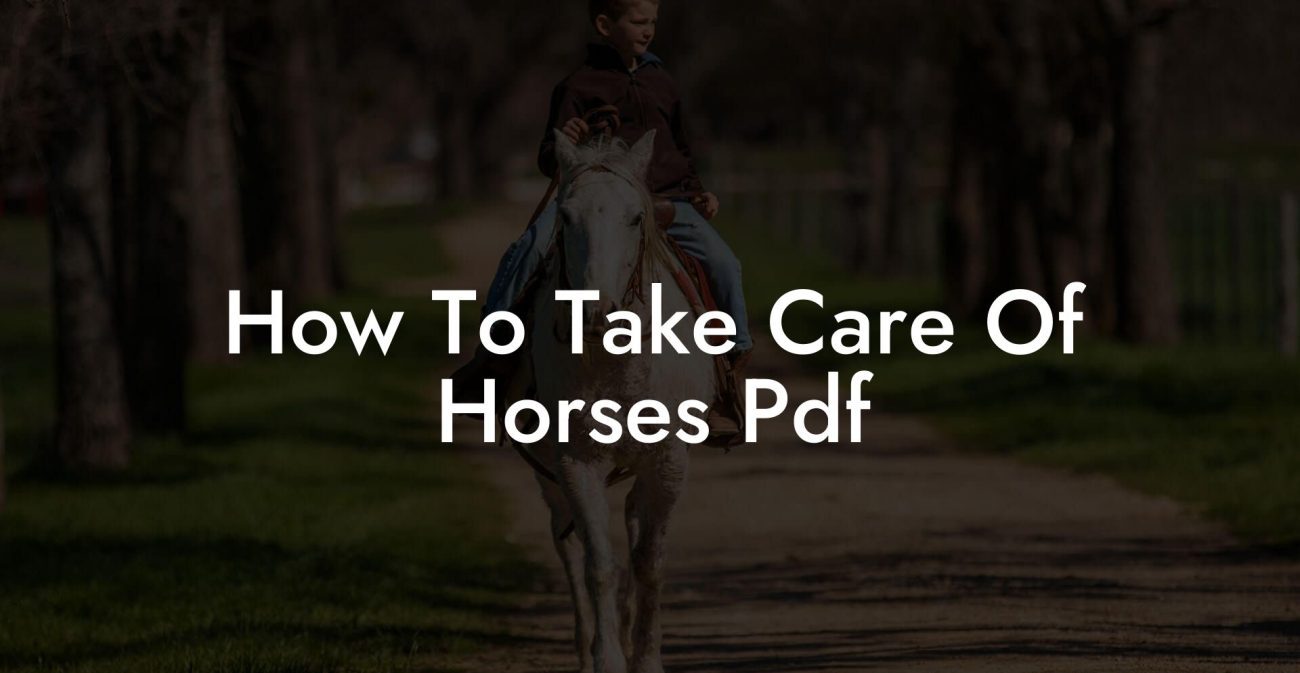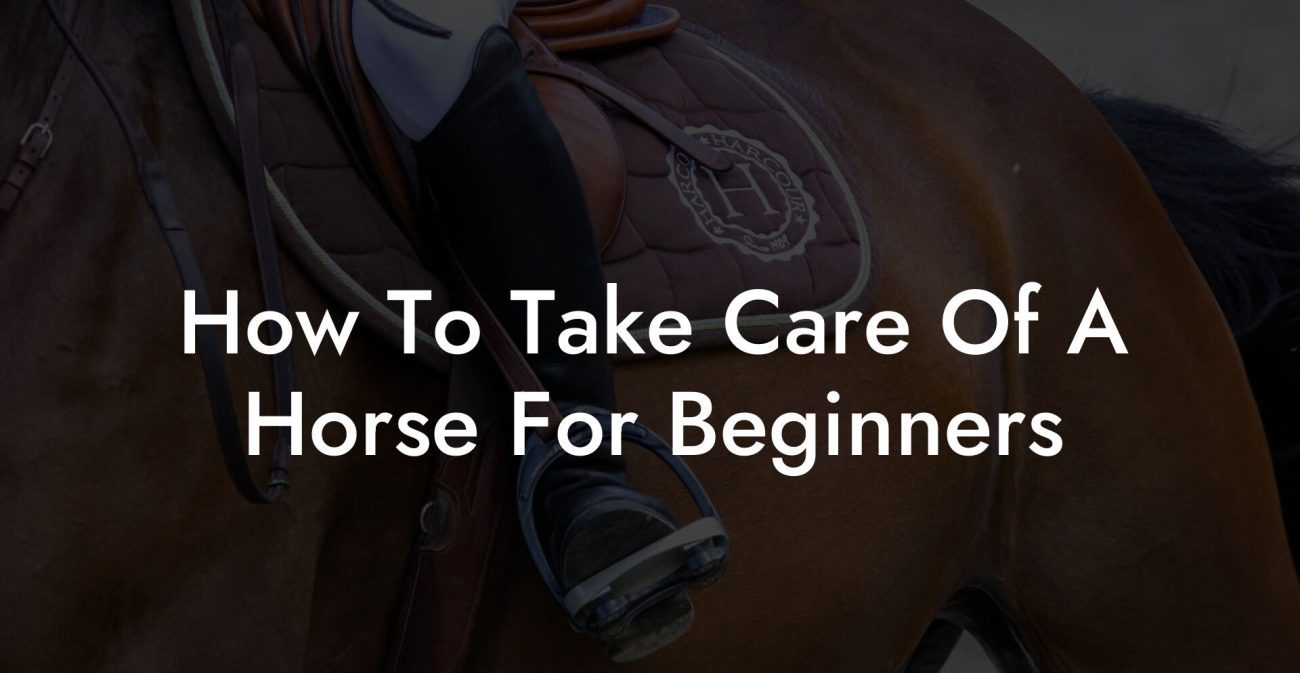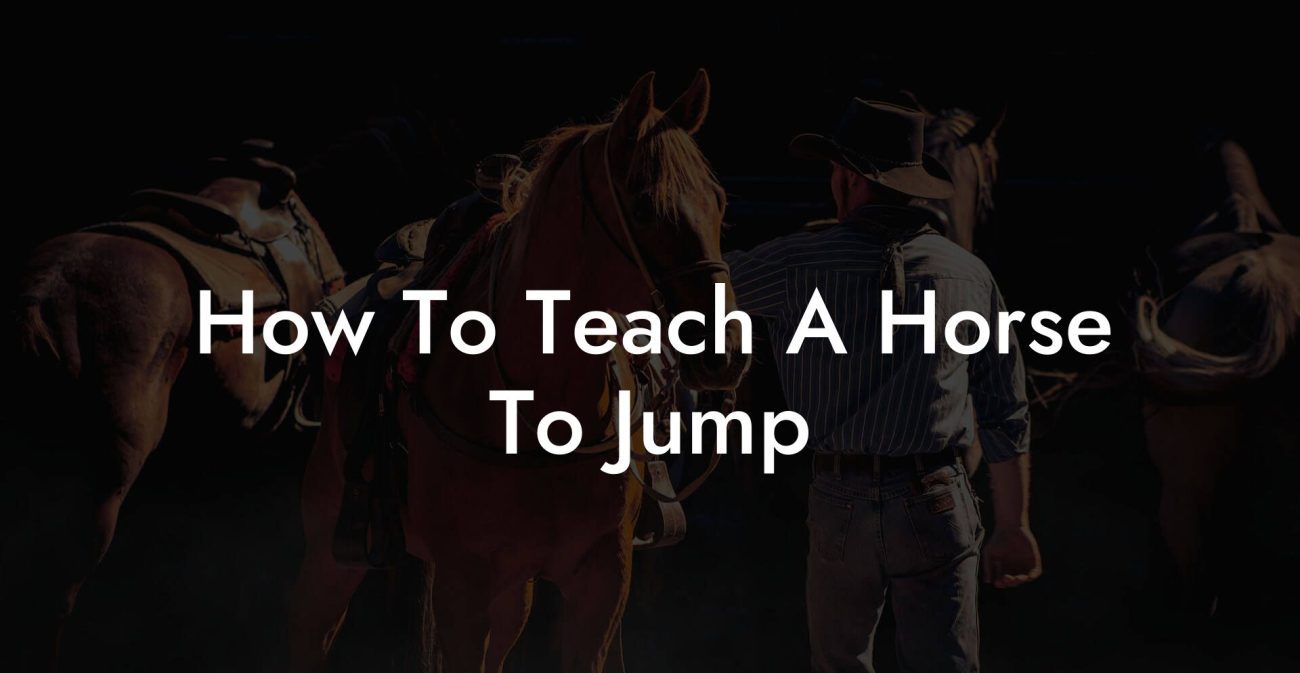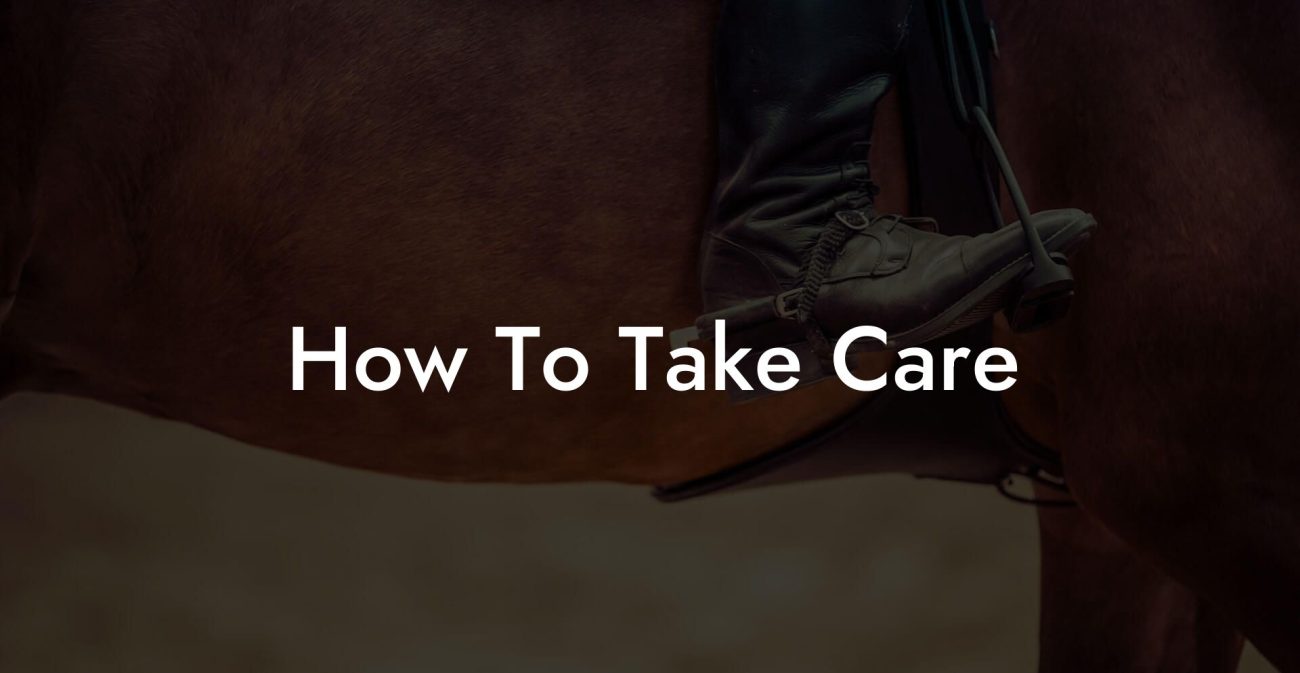Ever wondered why your horse seems to be living its best life on a perpetual buffet, yet looks like it’s always one carrot short of a waistline crisis? If your beloved easy keeper horse is starting to resemble a quirky couch potato with four legs, it’s time to roll up your sleeves (or saddle up) and dive into the art of slimming down that four-legged friend. This guide is all about transforming your horse’s bulging belly into a lean, mean, four-legged athlete without compromising on that signature easy keeper charm.
Quick Links to Useful Sections
- Understanding Your Easy Keeper Horse
- Why Slim Down an Easy Keeper Horse?
- The Science Behind Horse Weight Management
- Key Strategies to Slim Down Your Easy Keeper Horse
- Revamping Your Horse’s Diet: It's Not Just About Cutting Corn
- Focus on High-Quality Forage
- Portion Control and Timed Feedings
- Low-Calorie Supplements and Forage Enhancers
- Avoid the High-Calorie Pitfalls
- Exercise: Turning Your Horse’s stable into a Fitness Arena
- Structured Workouts
- Incorporating Variety with Interactive Activities
- Utilizing Technology for Tracking Progress
- Social Rides and Group Workouts
- Creating a Balanced Feeding Regimen for Long-Term Success
- Meal Timing and Frequency
- Evaluating Forage Quality
- The Role of Water
- Monitoring and Adjusting Portions
- Leveraging Supplements and Herbal Remedies
- Metabolic Boosters
- Joint and Muscle Support
- Herbal Remedies
- Environmental and Behavioral Management: The Social Side of Slimming Down
- Pasture Management
- Enrichment Activities
- Structured Daily Routine
- Case Studies: Transforming the Look and Feel of an Easy Keeper
- Case Study 1: Bella’s Bold Transformation
- Case Study 2: Duke’s Steady Turnaround
- Case Study 3: Luna’s Journey to Agility
- How to Monitor Progress: Tools and Techniques
- Weigh-Ins and Body Condition Scoring
- Fitness Trackers and Mobile Apps
- Regular Veterinary Check-Ups
- Resources and Community Support: Your Next Steps
- Online Communities and Forums
- Local Equine Events and Workshops
- Veterinary and Nutritionist Consultations
- Educational Resources
- Navigating Common Challenges with Humor and Grace
- Embracing an Empowered, Lean Future for Your Horse
- FAQs: Slimming Down Your Easy Keeper Horse
- Your Next Steps to a Sleeker, Healthier Horse
Understanding Your Easy Keeper Horse
Before you embark on the journey to trim your horse’s waistline, it’s essential to understand what an easy keeper really is. An easy keeper is a horse that maintains a robust weight with minimal feed, meaning its metabolism is naturally efficient in storing energy as fat. While this trait may be a blessing during lean times, in today’s era of abundant feed and pastures, it can lead to unwanted weight gain.
The genetics behind easy keepers are as fascinating as the memes circulating on social media. Just as some of us Gen Zers seem wired to binge-watch entire series in one sitting, these horses keep extra padding as insurance for the next hard times. However, in a world where pasture quality and food supply are top-notch, that “insurance” ends up being an overdose.
Recognizing the specific needs and metabolism of an easy keeper is the crucial first step in a successful weight management plan. It’s not just about restricting feed, it’s about striking the delicate balance between proper nutrition, exercise, and overall well-being.
Why Slim Down an Easy Keeper Horse?
If you’re a modern horse enthusiast, whether a Gen Z millennial or a youthful boomer, balancing your ride’s performance, health, and aesthetics is paramount. An overweight horse isn’t just a health risk; it can also lead to other complications:
- Lameness and Joint Stress: Carrying extra weight puts unnecessary pressure on joints, tendons, and ligaments, making lameness, arthritis, and other mobility issues more likely.
- Metabolic Disorders: Easy keepers are prone to laminitis, insulin resistance, and other metabolic issues that can ultimately threaten their quality of life.
- Reproductive Challenges: Overweight mares can experience difficulties in breeding and maintaining pregnancies, impacting future foal potential.
- Energy Efficiency: A slimmer horse is generally more agile and performs better during activities like trail rides, competitions, or simply showing off at the local barn party.
When your horse is healthy and at an optimal weight, not only are they more comfortable and active, but you’re also ensuring a longer, happier life with fewer medical issues. Plus, let’s be honest, a sleeker horse is just cooler, and who doesn’t want to be the proud owner of the equine equivalent of a fitness influencer?
The Science Behind Horse Weight Management
Weight management in horses, much like in humans, revolves around the balance between calories consumed and calories expended. However, horses have some unique physiological quirks:
- Digestive Tract Superpowers: Horses have a digestive system designed to process fibrous material slowly, extracting as much energy as possible from forage. For easy keepers, this is a double-edged sword, they extract more calories than their less efficient counterparts.
- Metabolic Efficiency: Due to their efficient metabolic system, these horses store excess energy as fat more quickly, making them prone to obesity if fed a high-energy diet.
- Activity Levels: Many easy keepers have a more laid-back attitude when it comes to exercise, sometimes resulting in fewer calories burned compared to their athletic companions.
Ultimately, the goal is to shift the energy balance: provide sufficient nutrients for health and performance while ensuring that excess calories are burned off rather than stored as fat.
Key Strategies to Slim Down Your Easy Keeper Horse
Slimming down your easy keeper isn’t about drastic measures; it’s about fine-tuning every aspect of your horse’s lifestyle. Here are the pillars to a successful weight management plan:
- Balanced Nutrition: Rethink your horse’s diet and focus on the right balance between forage, grain, and supplements.
- Controlled Feeding: Strategic daily feeding routines can help control calorie intake while still providing essential nutrients.
- Exercise and Activity: Incorporating regular physical activity can help burn off excess calories and boost overall fitness.
- Behavioral and Environmental Management: Keep your horse mentally stimulated and physically active through variety in their surroundings and routines.
- Regular Health Monitoring: Frequent weight and health checks ensure that your plan is on track and allows for timely adjustments.
Revamping Your Horse’s Diet: It's Not Just About Cutting Corn
Diet is at the heart of any weight management regimen, and for your easy keeper horse, it’s time to revisit what’s on their plate (or trough). Forget the myth of “just cut the feed”, the key is to provide a balanced diet that supports their overall health while encouraging gradual weight loss.
Focus on High-Quality Forage
Forage should be the centerpiece of your horse’s diet. High-quality hay or pasture grass is low in calories compared to grain-based concentrates, making it ideal for weight management. However, moderation is key, overindulgence in even the healthiest hay can lead to excessive calorie intake.
Portion Control and Timed Feedings
Instead of providing free access to feed, adopt a controlled feeding schedule. Divide the daily ration into several small meals rather than one or two large ones. This not only helps manage calorie intake but also mimics the natural grazing behavior of horses, reducing the risk of digestive issues.
Low-Calorie Supplements and Forage Enhancers
Consider integrating supplements that boost metabolism or offer additional nutrients without adding a calorie load. Products rich in omega-3 fatty acids, for example, do wonders for muscle health and inflammation control without sabotaging your weight loss goals. Always consult with your veterinarian before introducing new supplements.
Avoid the High-Calorie Pitfalls
Steer clear of high-starch grains and pellets unless absolutely necessary. These can quickly spike blood sugar levels and lead to weight gain. Instead, use specially formulated low-calorie feeds or substitutes that help your horse feel full and satisfied without extra calories.
By focusing on a balanced, quality diet, you’re laying the foundation for sustainable weight loss that supports both performance and long-term health.
Exercise: Turning Your Horse’s stable into a Fitness Arena
Just like us, horses thrive when they’re active. Exercise is crucial for burning calories, maintaining muscle mass, and boosting overall metabolic health. Here’s how to integrate more movement into your horse’s routine while keeping it fun and engaging:
Structured Workouts
Design a workout plan that gradually increases in intensity. Start with low-impact activities such as leisurely trail rides or hand-walking. As your horse builds stamina, introduce trotting, cantering, and eventually, short bursts of interval training.
Structured workouts not only improve cardiovascular health but also boost muscle tone, which in turn increases metabolism.
Incorporating Variety with Interactive Activities
Keep your horse’s mind engaged by varying the routine. Alternative activities like obstacle courses, ground poles, or even a bit of agility training can be both stimulating and physically challenging. Think of it as cross-training for your equine friend, variety helps prevent boredom and maintains consistent performance.
Utilizing Technology for Tracking Progress
With the rise of fitness trackers for humans, why not tap into similar tech for your horse? Devices that monitor heart rate, track distances covered, and analyze overall workload can provide valuable insights. These tools help you fine-tune the exercise regimen, ensuring that your horse stays active without getting overwhelmed.
Social Rides and Group Workouts
Horses are social creatures, and riding in groups can make workouts a lot more enjoyable. Organize group trail rides, or join local equine clubs that promote regular, structured exercise sessions. The positive energy of a group ride often motivates even a reluctant horse to pick up the pace.
Exercise isn’t just about burning calories, it’s about improving mood, reducing stress, and enhancing overall quality of life for both you and your horse.
Creating a Balanced Feeding Regimen for Long-Term Success
In addition to controlling calorie intake, crafting a balanced feeding plan that supports your horse’s overall health is non-negotiable. A well-structured feeding regimen ensures that your horse gets all the essential nutrients while steadily shedding excess pounds.
Meal Timing and Frequency
Mimic natural grazing patterns by dividing food into multiple smaller meals throughout the day. This approach helps maintain a stable energy level, prevents digestive disturbances, and stops your horse from getting overly hungry, which might tempt them to wolf down their entire meal in one go.
Evaluating Forage Quality
Regularly assess the quality of your hay or pasture. Lower-quality forage might contain more calories per unit as horses work harder to obtain nutrition. Opt for hay that is high in fiber and low in sugar and starch. Periodic lab tests can help determine if the forage meets your horse’s dietary needs.
The Role of Water
Adequate hydration is a cornerstone of any healthy diet. Not only does water support digestion and nutrient absorption, but it also helps regulate body temperature and facilitates metabolic processes. Make sure your horse has access to clean, fresh water at all times.
Monitoring and Adjusting Portions
A static feeding plan is a recipe for stagnation. Weigh your horse regularly and adjust food portions based on their weight loss progress and overall health. Collaborating with a veterinary nutritionist can yield a dynamic feed plan that allows tweaks based on seasonal changes, exercise levels, and health indicators.
Consistently revisiting and adjusting the feeding regimen is key to achieving a healthy weight while maintaining nutritional balance.
Leveraging Supplements and Herbal Remedies
While diet and exercise form the backbone of a slimming program, the smart use of supplements and herbal remedies can give your easy keeper horse that extra boost. Just like your daily multivitamin, the right supplements can support metabolism, joint health, and digestion.
Metabolic Boosters
Some natural supplements are designed to stimulate metabolism without overloading the system with extra calories. Ingredients such as chromium, L-carnitine, and certain herbal extracts may help encourage the breakdown of fat and the buildup of lean muscle tissue. As with any dietary change, consult your veterinarian before introducing new supplements.
Joint and Muscle Support
Extra weight can be hard on your horse’s joints and muscles. Supplementing their diet with glucosamine, chondroitin, and omega-3 fatty acids can help keep joints lubricated and muscles resilient. These supplements are particularly useful during periods of increased activity or when your horse is adapting to new exercise routines.
Herbal Remedies
Traditional herbs such as turmeric, ginger, and even devil’s claw have been championed for their anti-inflammatory properties. These herbs may soothe sore muscles and improve digestion, helping your horse feel more comfortable as they slim down. However, the herbal path should always be tread carefully, with professional guidance, to prevent any unintended side effects.
When implemented wisely, supplements and herbal remedies serve as complementary allies in the quest for a leaner, healthier horse, ensuring that nutritional deficiencies are avoided while metabolism remains robust.
Environmental and Behavioral Management: The Social Side of Slimming Down
It’s not all about feed and fitness, your horse’s surroundings and daily routine play an integral part in weight management. Environmental modifications can reduce boredom-induced overeating and encourage physical activity.
Pasture Management
Overgrazing can be an inadvertent goldmine of unwanted calories. By rotating pastures, offering limited grazing periods, or using grazing muzzles, you can control the caloric intake without completely depriving your horse of fresh grass. These approaches allow for nutritional diversity while keeping energy consumption in check.
Enrichment Activities
Horses are naturally curious creatures, and a bored horse is more likely to overeat. Providing various enrichment activities, such as puzzle feeders, varied terrains, or even scheduled playtime with barn buddies, can help distract your horse from constant grazing and encourage more natural, active behaviors.
Structured Daily Routine
Consistency helps regulate metabolism. Establish a daily routine that evenly spaces out feeding, exercise, and rest. A predictable schedule helps avoid overeating due to anxiety or boredom, providing your horse with both structure and variety.
Integrating environmental strategies elevates the weight management program by incorporating behavioral elements that encourage a healthier lifestyle overall.
Case Studies: Transforming the Look and Feel of an Easy Keeper
Theory is great, but real-life transformations provide the best proof that a solid plan works. Let’s explore a few case studies of easy keeper horses that moved from excess to excellence:
Case Study 1: Bella’s Bold Transformation
Bella, a beautiful bay with a penchant for grazing, had become a classic example of an easy keeper in need of a change. Her owner, a savvy millennial with a love for fitness apps and online communities, implemented a controlled feeding regimen combined with daily trail rides. By strategically using grazing muzzles and tech-savvy fitness trackers, Bella gradually shed her extra pounds. Within a few months, Bella’s energy skyrocketed, her coat shone brighter, and she showed off newfound agility during group trail rides.
Case Study 2: Duke’s Steady Turnaround
Duke, a charming gelding known for his strong work ethic, was already a bit on the plump side. His caretaker integrated a low-calorie, high-fiber diet with intermittent fast walks and structured play sessions. By swapping out high-starch concentrates for specially formulated low-calorie feeds, Duke’s weight slowly decreased while he maintained his muscle mass. The once sluggish Duke became a picture of energy, winning local riding contests, much to the envy of other barn owners.
Case Study 3: Luna’s Journey to Agility
Luna, a spirited mare with a knack for show jumping, had started to struggle with the demands of her sport due to extra weight. Her team developed a comprehensive plan involving a mix of low-calorie forage, scheduled exercise routines, and supplemental omega-3 support. Over time, Luna’s improved agility and better overall health allowed her to jump higher and perform more gracefully. Her success story has since become a motivational tale among fellow easy keeper owners looking for effective weight management strategies.
These success stories underscore the importance of a well-rounded, realistic approach that integrates nutrition, exercise, and lifestyle adjustments to transform an easy keeper into the lean competitor it was meant to be.
How to Monitor Progress: Tools and Techniques
When you’ve invested time and energy into slimming down your easy keeper, monitoring progress becomes crucial. Regular evaluations not only track success but allow for timely modifications when needed.
Weigh-Ins and Body Condition Scoring
Regular weigh-ins and visual body condition scoring provide a tangible measurement of your horse’s progress. Use a standardized body condition scoring system, a method based on visual and tactile assessments, to ensure your horse is losing weight at a healthy pace.
Fitness Trackers and Mobile Apps
Modern technology has made it easier than ever to track exercise routines and overall activity levels. Invest in a fitness tracker designed for horses that monitors heart rates, distances, and even recovery times. These gadgets sync with mobile apps that allow you to chart progress over weeks and months.
Regular Veterinary Check-Ups
Finally, maintaining regular check-ups with your veterinarian is critical. These professionals can provide expert advice, ensure your horse is healthy, and help adjust the weight management plan based on overall fitness, behavior, and any developing health issues.
Armed with these tools and techniques, you’ll never be in the dark about your horse’s progress, which means fewer surprises and more high-fives all around.
Resources and Community Support: Your Next Steps
Embarking on a weight loss journey for your easy keeper can sometimes feel like you’re navigating a labyrinth of nutritional jargon, exercise regimens, and community opinions. But here’s the good news: you’re not alone.
Online Communities and Forums
Join social media groups, Facebook pages, and dedicated equine forums where like-minded horse lovers share experiences, tips, and success stories. These communities are treasure troves of practical advice and personal anecdotes that resonate with the millennial and Gen Z spirit.
Local Equine Events and Workshops
Keep an eye out for local workshops, clinics, and equine events that focus on nutrition, exercise, and general horse care. These gatherings offer hands-on experience and networking opportunities with experts and other easy keeper owners.
Veterinary and Nutritionist Consultations
For a tailored approach to your horse’s weight management, consult equine nutritionists and veterinarians who specialize in metabolic conditions. A professional’s guidance can ensure that your horse’s diet, exercise, and overall health are optimally aligned.
Educational Resources
Check out trusted websites, online courses, and trusted equine care books that dive deeper into subjects such as low-calorie feeds, innovative exercise regimens, and emerging research on easy keeper metabolism. Continuous learning not only keeps you informed but makes the experience more engaging and dynamic.
Remember, your community of fellow horse enthusiasts is a powerful resource. Lean into it for inspiration, support, and reminders that every small step is a leap toward a healthier, leaner horse.
Navigating Common Challenges with Humor and Grace
Let’s be real, no weight management journey is completely free of hiccups. There will be days when your easy keeper seems to gobble every morsel in sight, or when a rainy day completely derails your outdoor exercise plans. Embrace these moments with a sense of humor and a down-to-earth attitude.
When faced with setbacks like unexpected weight plateaus or even that sneaky, extra treat-stashing trotter, remember that progress isn’t always linear. A laugh, a meme, and a recalibration of expectations can work wonders in keeping both you and your horse motivated. After all, if your horse can gracefully dodge a haybag mishap on a busy barn day, you can surely handle a small setback with style.
Embracing an Empowered, Lean Future for Your Horse
The journey to slimming down your easy keeper is not just about reducing inches, it’s about fostering a healthier, more active life for your equine companion. Every strategic change in their diet, every innovative twist to their exercise routine, and every collective high-five from the community helps create a happier, healthier horse.
Embrace the process as a journey of growth, both for your horse and for you. With a balanced diet, integrated exercise routines, cutting-edge technology, and a supportive community, your easy keeper doesn’t have to be a victim of its own efficiency. Instead, it can shine as an example of how thoughtful care, persistence, and a sprinkle of humor can lead to impressive transformations.
So saddle up and dive into the adventure of managing your horse’s weight. With a plan that’s as smart as it is playful, you’ll witness your horse turn the tide on unwanted fat and step into a leaner, more vibrant future. Your journey to a healthier, empowered equine companion begins now.
FAQs: Slimming Down Your Easy Keeper Horse
Below are some frequently asked questions that can help guide you through the process of slimming down your easy keeper horse:
1. What exactly is an easy keeper horse?
An easy keeper is a horse that is genetically inclined to maintain weight with minimal feed due to an efficient metabolism. This trait, while advantageous in lean times, can lead to overweight issues when food is abundant.
2. How can I tell if my horse is overweight?
Visual assessments like body condition scoring, along with weight measurements and feedback from your veterinarian, can help determine if your horse is carrying excess weight.
3. What dietary changes are most important for weight loss?
Focus primarily on high-quality, low-calorie forage, reduce high-starch grains, control portions with timed feedings, and use low-calorie supplements when necessary.
4. How much exercise does an easy keeper need?
Incorporate regular, structured workouts that include walking, trotting, and even interval training, along with enriching activities to encourage a consistent and balanced level of physical exertion.
5. How often should I weigh my horse?
Regular weigh-ins, every few weeks or monthly, are ideal for tracking progress and ensuring your horse’s weight loss is gradual and sustainable.
6. Can I implement these strategies without professional help?
Many of the strategies can be initiated at home with proper research; however, consulting with a veterinarian or equine nutritionist can help tailor the program to your horse’s unique needs.
7. Are there any risks involved with slimming down an easy keeper?
If done hastily or without proper guidance, rapid weight loss might lead to metabolic imbalances. A gradual, well-monitored approach ensures your horse remains healthy throughout the process.
8. What role does technology play in managing my horse’s weight?
Technology, such as fitness trackers and mobile apps, can help monitor activity levels, heart rate, and progress, enabling you to adjust exercise regimens and feeding plans in real time.
9. How can the community support my horse’s weight loss journey?
Online forums, local clubs, and equine events provide a platform to share experiences, get feedback, and exchange tips with other horse enthusiasts who are facing similar challenges.
10. What if my horse is resistant to change?
Patience is key. Gradual adjustments, positive reinforcement, and maintaining a consistent routine can help ease your horse into a healthier, leaner lifestyle.
Your Next Steps to a Sleeker, Healthier Horse
The prospect of slimming down your easy keeper horse might sound daunting at first, but with a little ingenuity, a supportive community, and the right balance between nutrition and exercise, it’s entirely achievable. Every carefully measured hay bale, every interval training session, and every shared success story builds towards a future where your horse is not just an easy keeper by nature, but a lean, agile, and vibrant athlete.
Whether you’re adjusting meal portions, exploring new exercise strategies, or tapping into technology to monitor progress, know that each step you take is a step toward a healthier, more fulfilling equine lifestyle. Embrace the challenge with humor, creativity, and a willingness to learn, and soon, your horse will be turning heads not for its ample reserves, but for its athletic prowess and renewed vitality.
Go ahead, take the reins on this journey. Your easy keeper horse deserves nothing less than a life filled with energy, confidence, and a touch of modern chic. Here’s to championing health, one measured hay bale at a time!













